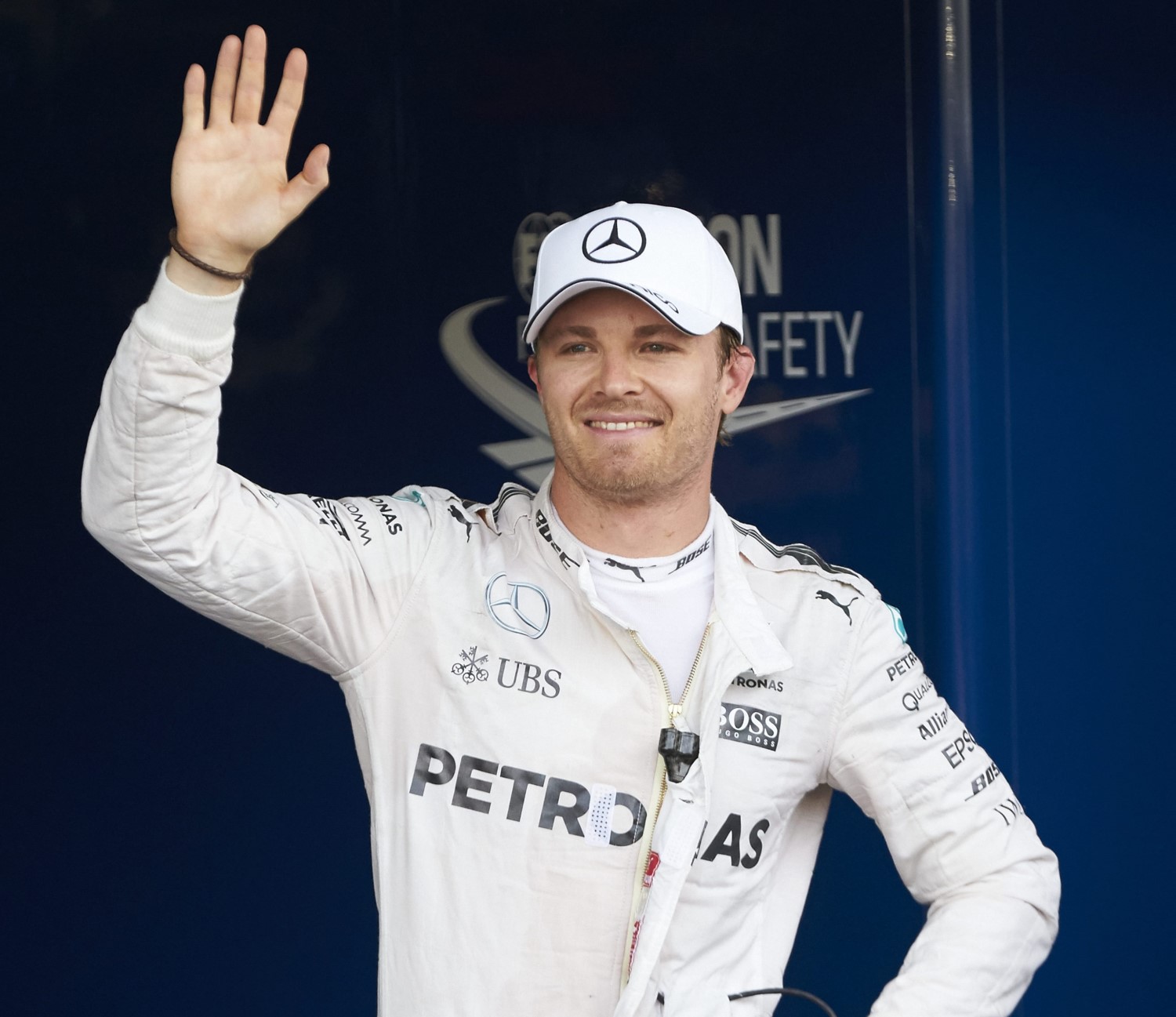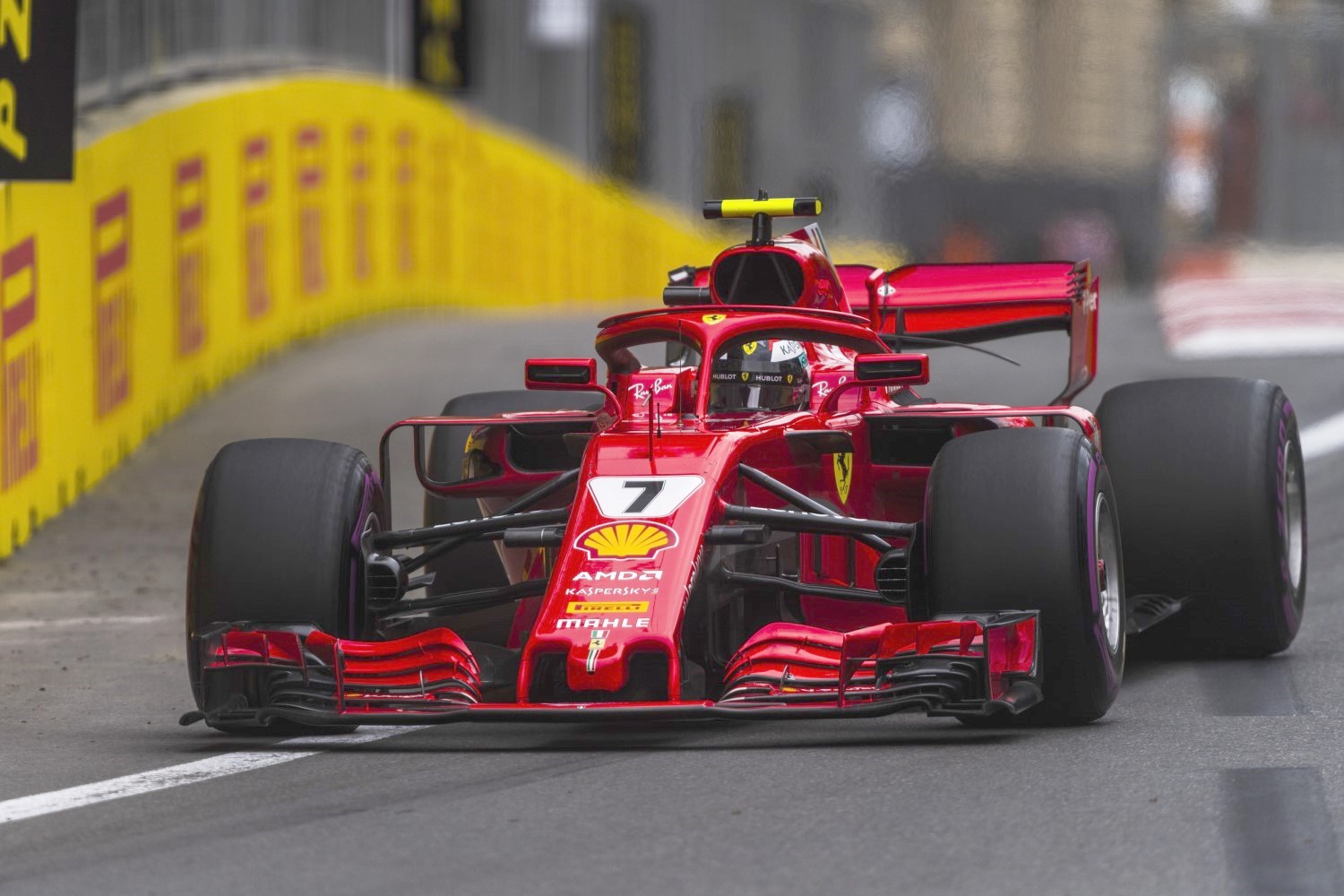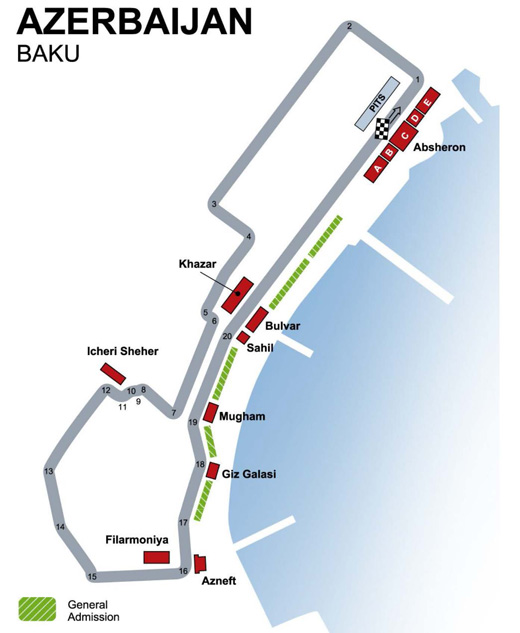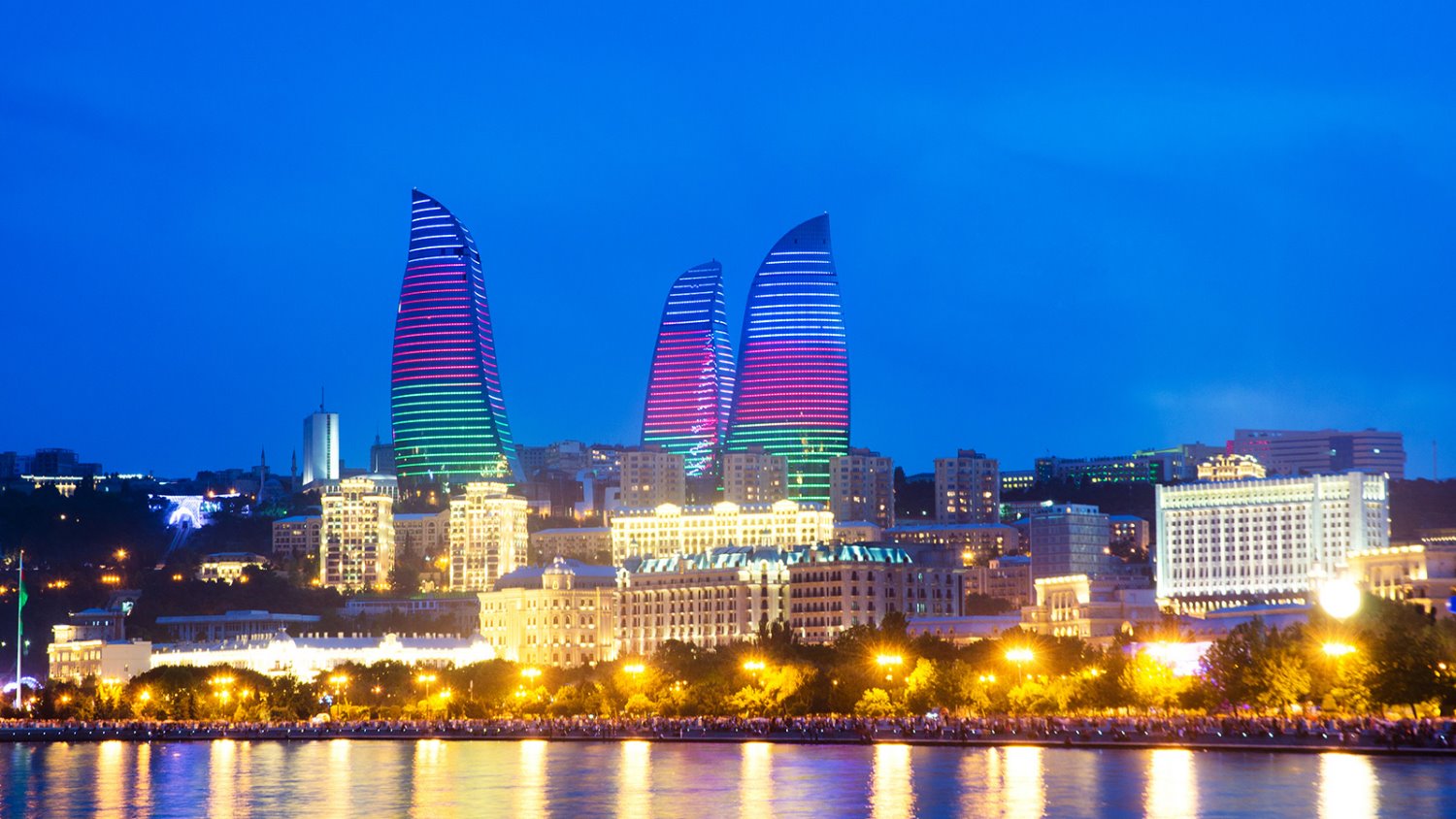Azerbaijan (Baku) GP Preview
 |
| Nico Rosberg won the first Baku GP |
After Formula 1 reached a major milestone in China, the series now moves on to Azerbaijan, the venue for the 1,001st Grand Prix. Lewis Hamilton and Valtteri Bottas can look back on a fantastic start to the season, having taken three wins from the first three races. The Baku City Circuit has hosted a Formula 1 race on only three previous occasions. The winner of the inaugural race in the 2016 season was Nico Rosberg at the wheel of an F1 W07 Hybrid.
Initially, the Baku race had the status of European Grand Prix, but since 2017, it has been contested as the Azerbaijan Grand Prix. The team has also won one of the races held under this new designation. Last year, Lewis was able to claim a maiden victory in the streets of Baku after Valtteri was forced to retire with a puncture in the closing stage of the race while in the lead. With two victories and two pole positions, Mercedes is the most successful brand on the Baku street circuit to date. The team will be back on the narrow, winding streets of the Azerbaijan capital next weekend.
Track puts premium on HP and low downforce
[adinserter name="GOOGLE AD"]The Azerbaijan capital has only recently featured on motorsport’s world stage, with the first race, a GT event, being held as recently as 2012. Nevertheless, the circuit was an immediate hit with the drivers who like the extremely high speeds experienced on the straights, especially on the start-finish one, which sees speeds in excess of 350 km/h.
The track features long straights and right-angle turns. That makes engine power a key requirement, while drivers have to brush the walls in search of a quick lap, using every inch of the track. There’s also a tighter section around turns 8,9,10 and 11, including the incredibly narrow section around the ancient castle, where good traction is the main requirement. The circuit map can be misleading, because it claims there are turns 17,18, 19 and 20 but this section is taken flat out and DRS can be deployed here.
Ferrari has little chance
 |
| Raikkonen was 2nd for Ferrari in 2018 but they have little chance of beating the superior Aldo Costa designed Mercedes |
Ex-Formula 1 team boss, Flavio Briatore, is pretty indifferent to Ferrari’s sluggish start to 2019, saying they have been “slow for eight years".
At this stage last season, Sebastian Vettel was top of the World Championship standings by nine points. This year, he is already 31 points behind current World Championship leader and five-time World Champion Lewis Hamilton.
Ferrari should have had at least one Grand Prix win on the board with Charles Leclerc in Bahrain, but find themselves with some big ground to make up just three rounds into the 2019 season
“What’s wrong with Ferrari? It’s nothing new," Briatore told Italian broadcaster La 7.
“The car has been slow for eight years."
Briatore also took issue with the current structure Ferrari have in place after Mattia Binotto replaced Maurizio Arrivabene as Scuderia team boss.
He added: “With Binotto, they run the risk of not having a fully dedicated boss and also becoming lost in the technical area."
“Nothing has changed compared to last year," Briatore then said when asked specifically about Ferrari’s poor start this season.
“They have not reduced the gap to Mercedes.
“The usual repertoire of excuses already started in the first race.
The Baku street circuit is one of three venues on the current calendar where Scuderia Ferrari Mission Winnow has never won. The other two are Sochi in Russia and Yas Marina in Abu Dhabi. The best result for the Maranello squad at this venue was last year’s second place courtesy of Kimi Raikkonen.
Mercedes' Toto Wolff Talks Azerbaijan
Three 1-2s in the first three races represent a fantastic start to the season. We were able to maximize our opportunities, although we didn't always have the fastest car. The team has done a very good job and performed strongly in every department, the double-stacked pit stop in Shanghai is just one visible example of many that are happening every week at all levels of the team. But we know that we need to keep pushing.
The next stop will take us to Azerbaijan where we've seen some very entertaining races in recent years and I'm sure that this year will be no different. The layout of the track presents unique challenges and it will be interesting to see which team will find the best compromise to deal with the mixture of long straights and slow corners. Baku is not purely about performance, though, and staying out of trouble is also important for a good result in Azerbaijan.
Valtteri drove a strong race last year but a puncture denied him a well-deserved victory shortly before the end. He's had a good start to this season and I'm sure he will be hungry to go for the points he didn't get last year. Unlike last year, Lewis heads to Baku leading the Championship and will undoubtedly be looking to repeat his win from 2018.
The Wild Streets of Baku
Baku has hosted some of the most entertaining races in recent years – and plenty of on-track chaos as well. The Safety Car made three appearances during the 2017 Azerbaijan Grand Prix and twice the following year. So, what makes the streets of Baku so wild?
What makes Baku so challenging for the drivers?
 |
| Circuit Map |
First of all, it's a street circuit, which means that the cars race on relatively narrow roads – particularly in the old town – with tight walls and few run-off areas. While that doesn't necessarily make driving more difficult, it does mean mistakes have harsher consequences. If you get something wrong in Baku, chances are your weekend becomes much quieter while that of your mechanics is suddenly much busier.
What else makes it difficult?
Getting the tires in the optimal temperature window is crucial; F1 tires operate at temperatures around 100 degrees to provide optimal grip levels. However, making sure that the tires, and, in particular, the front tires, reach their performance window can be quite difficult in Baku. With the Azerbaijan Grand Prix taking place relatively early in the year, track temperatures are usually quite low; in fact, Baku has the potential of being the coolest track we will see all year. During last year's race, track temperatures averaged about 25 degrees Celsius – a relatively cool surface for F1 tires to drive on. And even on a sunny day, large portions of the track are in the shadow and don't warm up. The track layout adds to the challenge as the tires cool down on the long straights and the slow corners don't create a lot of energy to warm them up. This challenge is exacerbated under Safety Car conditions when the cars have to go slower than usual, putting even less energy into the tires. That's why aggressive tire warming maneuvers are quite common in Baku.
Does the unusual layout of the track create any other difficulties?
 |
| Baku at night |
The Baku City Circuit features a unique layout as it's basically two tracks in one – it's half Monza and half Monaco. The long straight with a heavy braking event at the end shows similarities to the Northern Italian power circuit whereas the twisty, narrow old-town section shares some of the characteristics of Monte Carlo. This unusual mix of character traits makes the set-up of the car an interesting balancing act. The brakes, for example, cool down significantly on the long straight into Turn 1; well below the temperatures where the discs and pads produce maximum friction and are therefore most effective. Closing up the brake ducts to keep the brakes as warm as possible would thus be ideal in that section; however, it would make the brakes overheat in the old town where the absence of longer straights means there's little opportunity for the brakes to cool down between turns, requiring more air flow through the brake ducts than teams would want for the "Monza part" of the circuit.
What does this track layout mean for the downforce the teams run?
It's again about compromise. When F1 first came to Baku in 2016, teams would veer towards higher downforce packages to be quick around the low-speed corners of the track. Realizing that this slightly higher downforce set-up ultimately cost lap time owing to the drag penalty on the massively long straight, the balance has shifted towards a package with less downforce. The wings don't quite reach the level of Monza; however, they are in the medium-downforce region that teams run in Spa or Montreal.
How does the high probability of a Safety Car factor into the strategy preparation for the weekend?
The trickiest moment under Safety Car conditions is at the restart of the race. This is particularly true on a track like Baku where the start-finish straight offers lots of overtaking opportunities and being the leader of the pack is somewhat of a disadvantage: Go too soon and you will catch up the Safety Car before it enters the pits. Go too late and you can be a sitting duck to cars tucked up tight in your slipstream. In preparation for the Azerbaijan Grand Prix, teams therefore review Safety Car restarts more closely than at any other track because of the wide variety of options.
Tires
Baku is known as the ‘city of winds’ – which have an effect on the aerodynamics. In the past there have been very high track temperatures, but cool weather as well. It’s a tough race to predict.
The long straights have the effect of cooling down the front tires in particular – a bit like China – which can cause a risk of front locking.
Last year the race was won with a two-stop strategy, but this was influenced by two safety cars. In fact, the safety car has been out in the last two of the three Azerbaijan races held to date, so all strategies have to be flexible.
As is always the case on a street circuit, the surface tends to be ‘green’ and slippery at the start of the weekend especially, and grip is affected by features such as white lines and surface changes, Degradation is generally low on the smooth surface.
Another factor affecting grip levels is the fact that there are patches of light and shades along the circuit, which is downtown and surrounded by high buildings. This means that the track temperature can vary of different parts of the circuit. The race starts at 4.10 pm, so temperatures can fall quite quickly.
MARIO ISOLA – HEAD OF PIRELLI F1 AND CAR RACING
“The main challenge in Baku lies in balancing the front and rear axles, keeping both the front and rear tires in the right operating window. It is quite a varied track, with a very long two-kilometer straight and also some more technical corners. The frequency of the safety car also often causes a headache – or maybe an opportunity – for the strategists. The tires that we have nominated from the middle of our range should be well-suited to the mixed demands of Baku, but it’s always one of the most difficult races of the year to predict. This is often the case for a street circuit, but Baku is the most unconventional street circuit on the calendar, with the high speeds of a conventional track as well as a very long lap."
The three top teams have all made different tire nominations. Red Bull has the most sets of soft tires of the leading trio, followed by Mercedes, while Ferrari has selected the least soft tires of any team.
Select Quotes
Sebastian Vettel #5
“This six kilometer circuit has the longest straight on the calendar, 2.2 kilometers, where we reach 360 kph before the very heavy braking for the first slow left hand turn. The steep climb past the old city walls is only seven meters wide, which feels very tight in a Formula One car – you feel like you are threading a needle. There isn´t enough space for two cars here so you have to agree on the right of way between you! A big challenge at Baku is to find the right wing level to get good grip for the slow corners but also to be fast enough on the straights where we spend a lot of time at full throttle. It’s not an easy compromise."
Charles Leclerc #16
“Azerbaijan is one of my favorite tracks of the season, I simply love it and I’ve always performed very well there, having won and got another podium finish in Formula 2 and also scored my first Formula 1 points last year. I always enjoy driving on it, especially the castle part with all those tight corners. It’s a unique track, you cannot find anything like it anywhere else in the world, so it’s pretty special. The rule is quite simple: never lose focus during the race otherwise at the first mistake you’re in the wall. Baku is a demanding track, but I can’t wait."
Mattia Binotto Ferrari Team Principal
Coming off the back of three races that definitely didn’t go the way we wanted, this GP is another important moment for us. We have prepared for it very well, analyzing all the data we have acquired up until now, looking at areas where we can improve and working on adapting the car’s set-up and the power unit management to the characteristics of the track. In fact, Baku features a very long straight, which places special demands on the engine, both the internal combustion part as well as the hybrid elements. It’s relatively easy to overtake on this track, partly due to the DRS, especially this year as it has a greater effect than in the past. The track surface is very smooth, which means tire wear is generally low, but as the tires therefore generate less energy, it can be difficult to get them in the right working temperature range. We know from past experience that there’s a high probability of the Safety Car appearing on track in Baku and therefore it’s an important aspect to consider when looking at the race strategy. We are bringing a few updates to Baku, as the first step in the development of the SF90.
Sergio Perez #11
“Baku has become one of my favorite races of the year. It’s a quick lap with good overtaking opportunities and that seems to generate lots of drama. I love the lap and it’s a real challenge for the drivers because the walls are close and you have to be so precise. Street circuits generally really test the drivers and I actually wish we had more on them on the calendar.
“I’ve been on the podium in Baku at two of the three races so far and I think my podium last year was one of my best races. I remember getting ahead of Vettel and then keeping him behind me during the final laps. I had to concentrate so hard and I drove some of the best laps of my life. Each lap was like a qualifying lap!
“This team has always been competitive in Baku so I am hopeful the same is true this year. For a number of reasons the track layout has always suited our cars. It’s a track where you need good top speed and confidence on the brakes. I was happier with our performance level in China, especially on Sunday, and we need to find the same rhythm in Baku."
Lance Stroll #18
“I’m really pumped for this weekend in Baku. It’s a circuit I enjoy and a race with happy memories for me. I scored my first podium there in 2017 and I picked up points last year too. Baku is one of those races where you have to take your chances and make those opportunities count.
“I enjoy street circuits generally and the layout in Baku is great fun to drive. It’s quite a technical lap because there are lots of 90-degree corners, but also some really quick sections. The end of the lap is really fast and because it’s a street track the walls are really close to you. It’s tight with no margin for error and it always looks really spectacular on TV.
“This weekend is a good opportunity for us to score some more points. I think the track layout will suit us better than Bahrain and China, and we’ve done lots of preparation work in the simulator. I think we will see plenty of slipstreaming down the main straight again this year so I would expect some close racing."
Frederic Vasseur, Team Principal Alfa Romeo Racing and CEO Sauber Motorsport AG:
“I normally don’t spend much time in overanalyzing previous races – I look forward and work hard on how we can come back even stronger – but after three races it makes sense to reflect on our performance so far. We’ve scored points, which is great, the car showed great potential, but at the same time we faced some technical issues and tricky situations. Kimi is doing a great job, his feedback to engineers is as precise as it can be and as soon as he sits in the car he gets the job done. Antonio so far couldn’t show his real potential, but that’s completely down to the team. Some technical issues and therefore missed track time meant that he could never get comfortable and get the best out of the car, but especially in Australia in Q1 he showed how fast he is. Everyone just needs to be a bit patient and I’m sure he’ll come around.
Baku means crashes and safety cars and overtaking so you’ll never know what to expect from the race, but our target is clear: we’ve put a lot of work into the development of our performance since the race in China so we want to finish in the points with both cars."
Kimi Raikkonen #7:
“I generally don’t like to make predictions, especially in Baku as anything can happen there. In principal our performance is strong, the car is fast, but we constantly need to improve in order to establish ourselves as best of the rest and score as many points as possible."
Antonio Giovinazzi #99:
“Next to training I also watched fellow countryman Fabio Fognini win the ATP Tennis Masters in Monte Carlo on Easter Sunday, so I’m going to Baku pumped up and with some good vibes. I have very good memories as I won two races when I drove in GP2, I like the track and I hope that I can improve my performance and get the maximum potential out of the car."
Robert Kubica
It’s time for the fourth race of the season in Baku. The circuit looks challenging from what I watched last year, and definitely one of the most demanding tracks. It will be my first time driving there. In the past, I really enjoyed driving around these types of circuits, so I look forward to getting the same feeling I did in the past.
George Russell
I am really looking forward to going to Baku. Last year in FIA Formula 2 it was probably my strongest weekend and we should have won both races. I was leading the first one but had an unfortunate incident at the end of the race after a safety car and then came back to win the second race from P12 on the grid. I have great memories there, so I am looking forward to getting back to the street circuit of Baku.
Dave Robson, Williams Senior Race Engineer: The streets of Baku serve as the race track for round four of the 2019 FIA Formula One World Championship. The circuit delivers a variety of challenges, including some severe gradients, difficult braking zones, and a particularly long straight. With the main competitive sessions of the weekend taking place at twilight, the track can cool quickly, often catching drivers out.
At over six-kilometers, the circuit is the second longest of the season, with only Spa Francorchamps being longer. Due to the varied layout of the circuit, we can expect teams to experiment with drag level during the weekend as drivers grapple with the conflicting requirements of long straights and a very tight twisty section in the middle of the lap. For our drivers, George is familiar with the track having won the Baku F2 Sprint race in 2018, but for Robert this will be a new experience in his comeback season.
